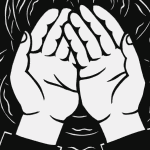In 1948, The New Yorker published a story about idyllic small-town America where everyone knows everyone’s name. Each year, those names are placed into a box and townspeople gather as one name is retrieved and the owner of that name is then publicly stoned to death. The story is “The Lottery,” and it remains Shirley Jackson’s masterpiece.
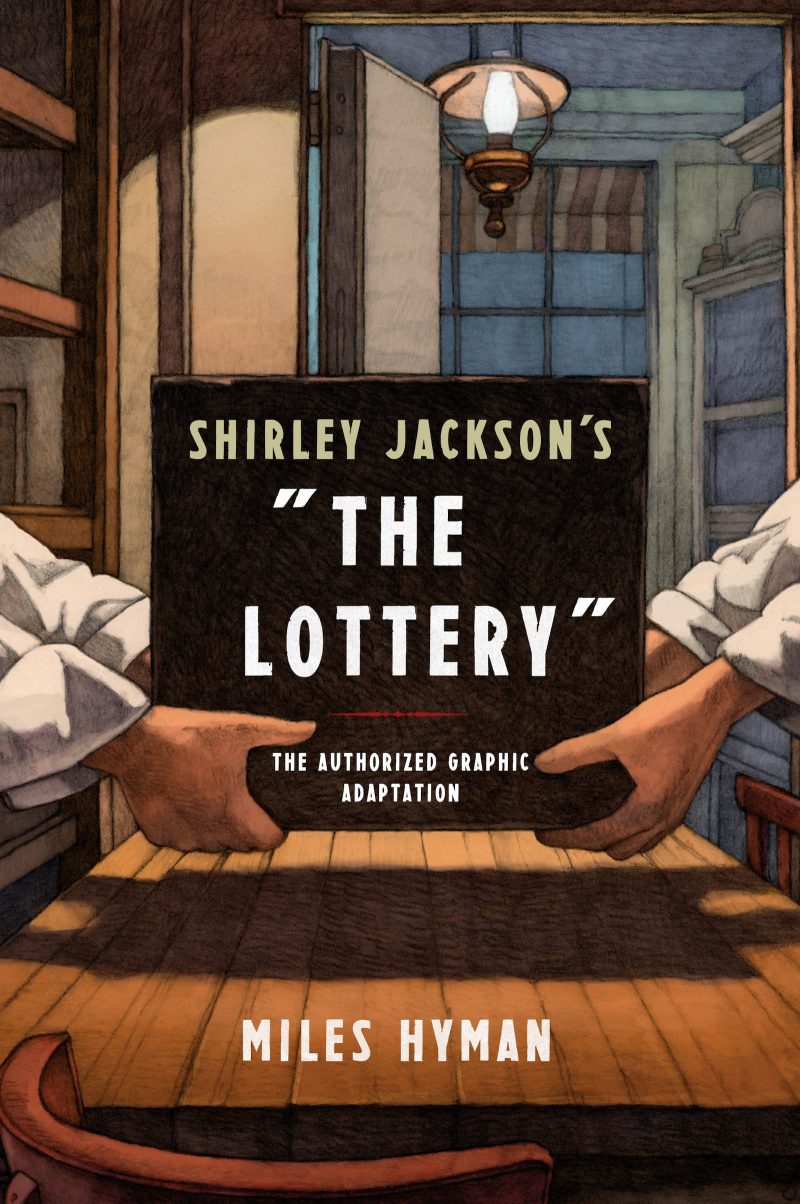
Perhaps the high-water mark in contemporary morality tales, “The Lottery” marries the twin conundrums of democracy and decency to superstition, group think, public action, crime, punishment, judges, juries, victims, and human nature and make this one of the most potent (and remembered) works of fiction–even if the lessons are lost, or misconstrued.
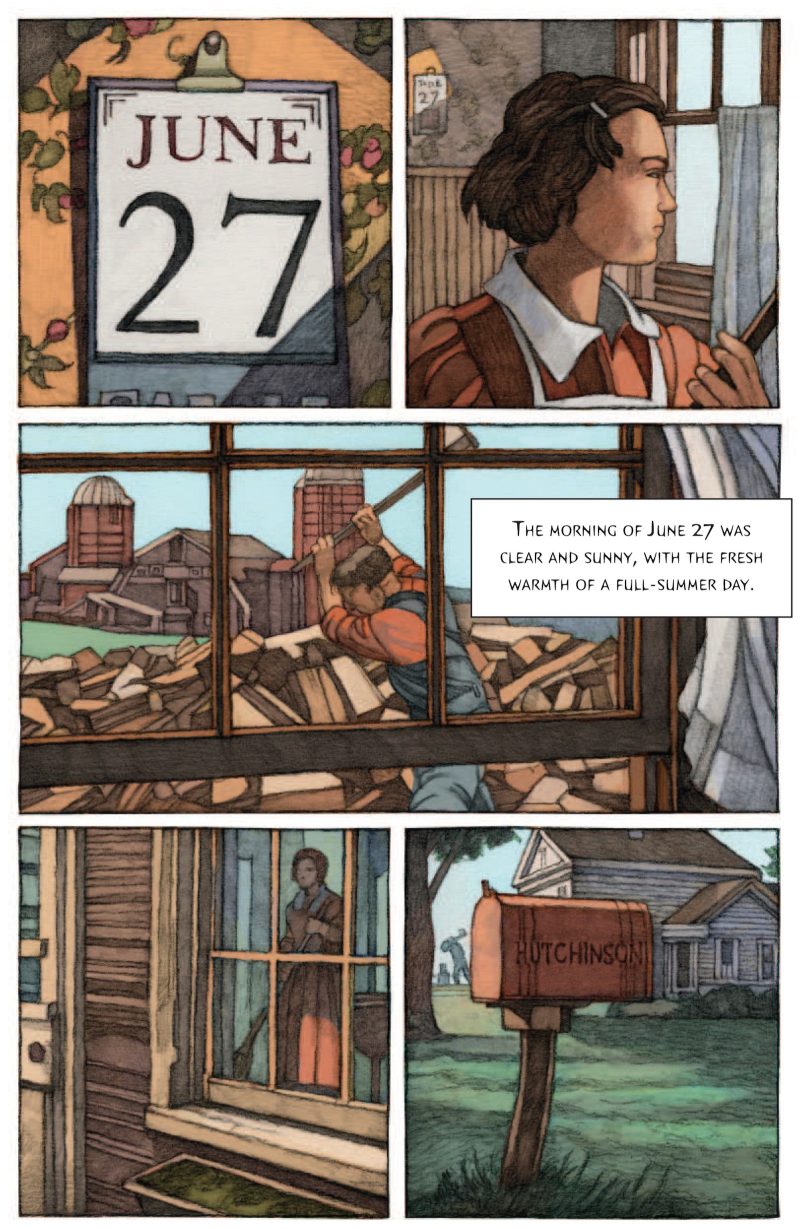
This past fall, American artist Miles Hyman published The Lottery as a “graphic adaptation” illustrating the narrative in a deliberate and declarative style that is part film noir and part Grant Wood. A Vermont native, Hyman is also Shirley Jackson’s grandson, and his illustrated version of “The Lottery” is true to the language and mundane telling of the town’s annual “ritual” of sacrifice.
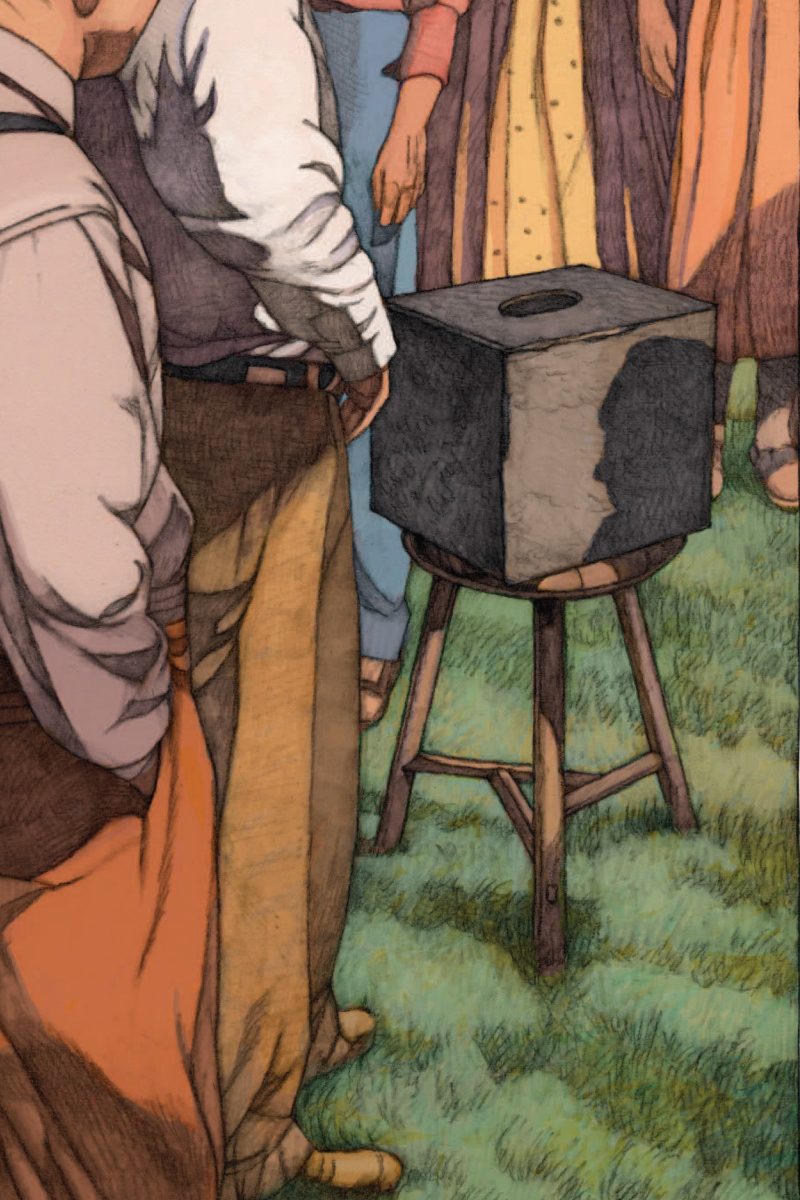
“I read ‘The Lottery’ several times over the years,” recalls Hyman, who lives and works in a Parisian suburb. “The first time in high school, again when I was 30, and then just recently when I was adapting it graphically. The story says different things depending upon what time of life you come to it. It says so much with so little. Part of its allure is its minimalist, spare language; turning it into a image-based story was a challenge. Not to show more than what the story does, to keep the secrets of the dozen or so pages, and have those remain ambiguous, that was the key to the success of the story and the graphic adaptation.”
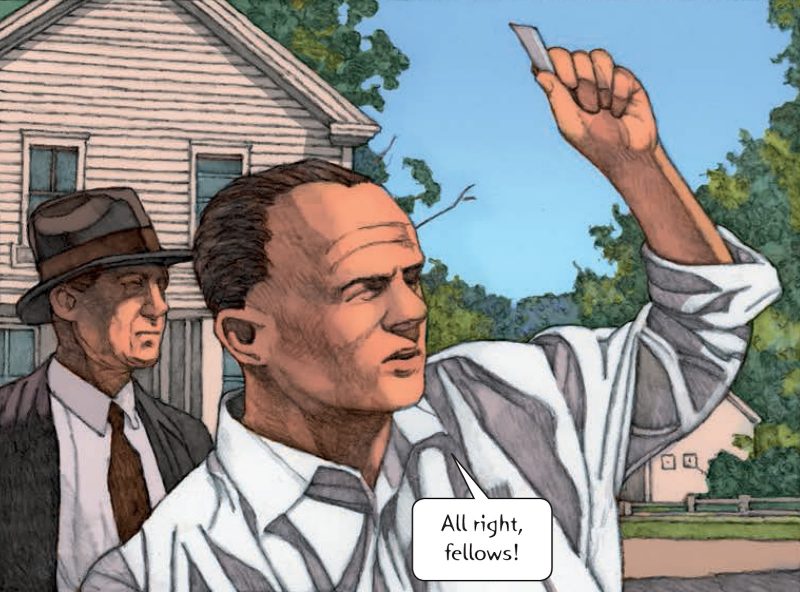
All of Jackson’s dialogue is used in Hyman’s adaptation, but many pages of this book are simply drawn and colored panels that slowly propel forward the story of that ominous day in June. People prepare their day in silence, bathing, playing, chopping wood, plowing. Of note is one of the townspeople reminding us of the ritual’s origins: “Used to be a saying about ‘Lottery in June, corn be heavy soon.’”
A significant challenge in illustrating “The Lottery” was analyzing a text that was horrific and violent, but which has a “hermetic structure, words joined with a jeweler’s precision.” Hyman’s last drawing shows the townspeople closing in on Mrs Hutchinson (“Tessie”), who drew the lottery ticket, as she’s being drowned in a sea of neighbors and friends and hit with stones. Hyman’s approach is dry, minimal, and efficient, and therein lies the shock–the overwhelming silence of a community-arranged annual killing.
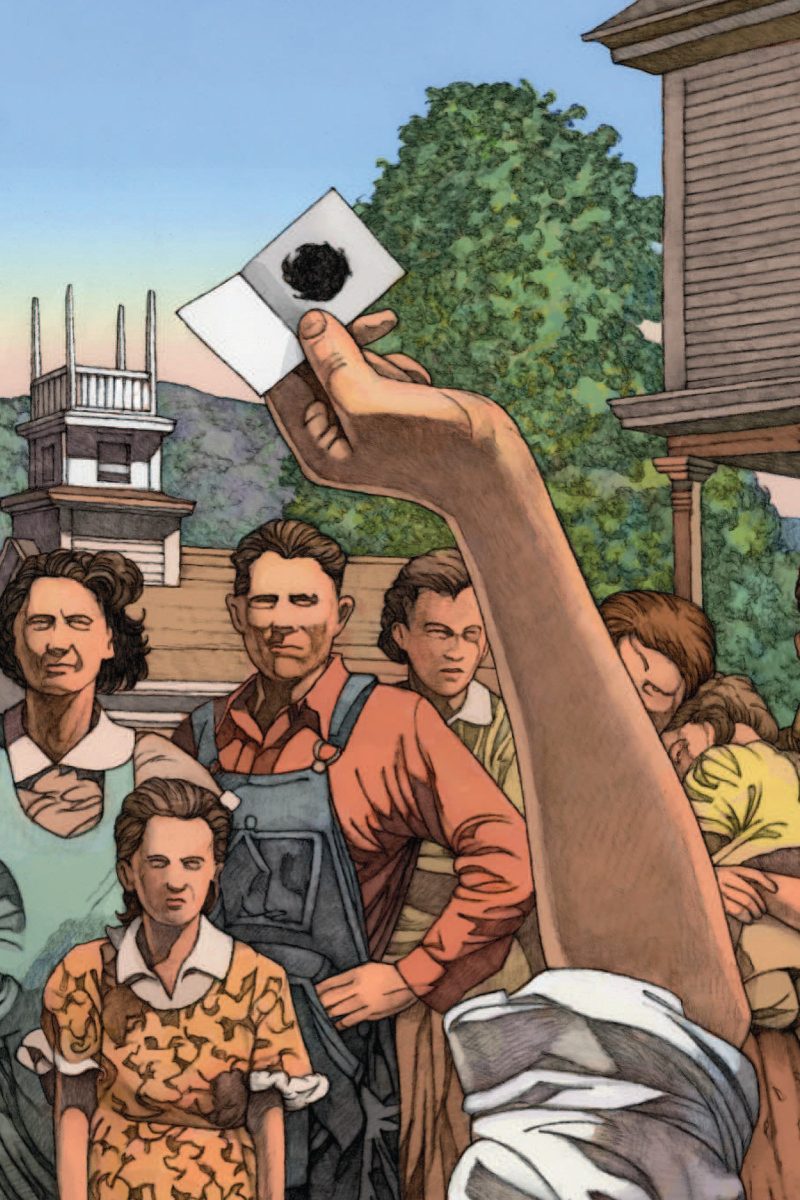
Hyman who studied literature at the “hippie boarding school, Buxton,” graduated with a degree in literature at Wesleyan. “I had always been drawing but never thought it was something I’d do for a living,” he says. He soon gravitated to mid-20th century American realists like Grant Wood, Edward Hopper, George Bellows, and Thomas Hart Benton, and found his line–and living–creating “bandes dessinées” in what he calls the “golden age of graphic novels.” Hyman is a fan of French graphic artists like Jacques Tardi’s Ici Même, the “surreal story of a man who is only allowed to live on the very top of the walls on a country estate.” [It was also one of the first French books I read some 20 years ago].
When Shirley Jackson (1915-1965) wrote “The Lottery,” the story was a theoretical evocation of a biblical horror, but that’s no longer the case in this world, says Hyman. “The reality of public stoning is very current–some 70 years ago it was archaic, but today it’s not unheard of–just look around.”
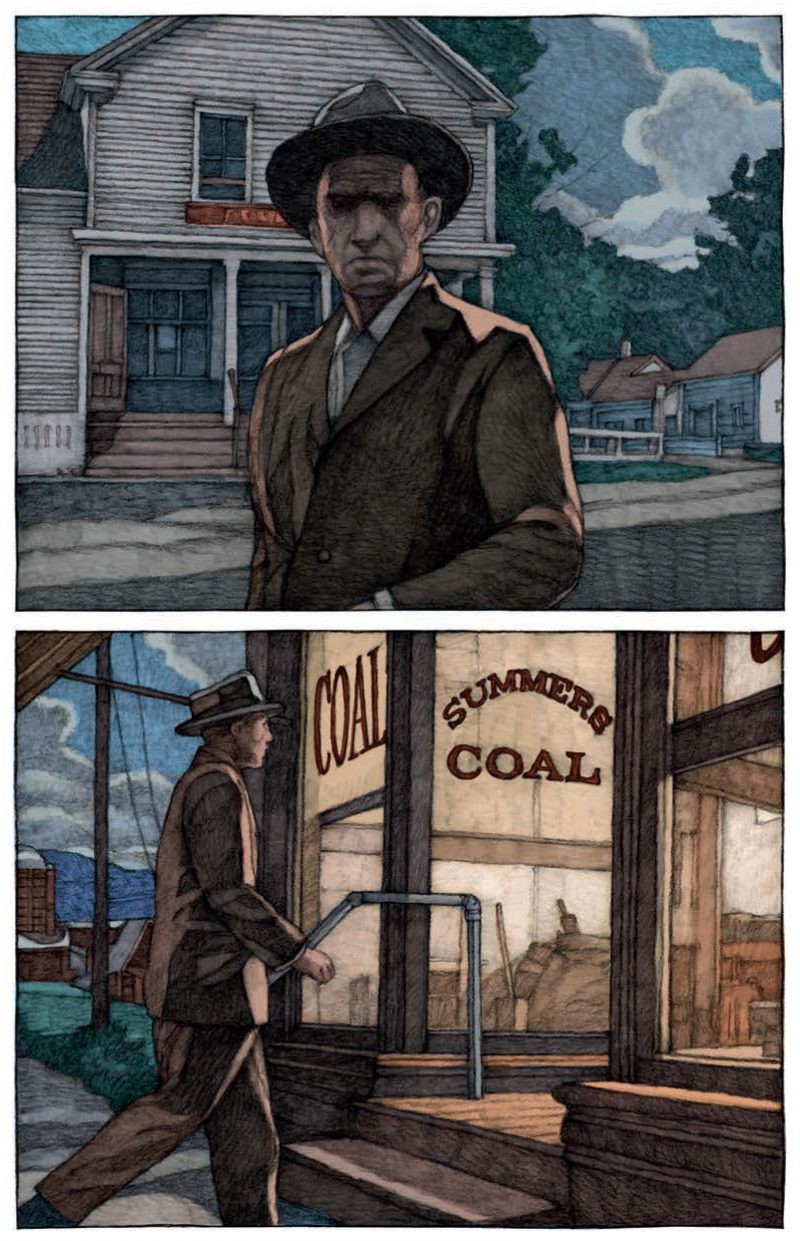
“The Lottery” has remained relevant because of the way it powerfully and accurately portrays fear as a major factor in our current civic and political lives. In many ways, it is a contemporary fable that has found some of its essence in novels and films like The Hunger Games and Divergence.
“The way we accept violent ideas as par for the course,” Hyman adds. “Someone should be standing up and resisting those prehistoric ideas still in our culture. What bothers people about that story is that Shirley Jackson touches a raw nerve; no one likes to have that aspect of our political weaknesses pointed out–our acceptance of social injustice for the ‘common good.’”
In the end, “The Lottery” is an insidious portrait of community and a lethal DNA encoded within it. The manner in which violence is encapsulated into a ritual makes it safe, and is offered a haven. Hyman notes that present day warfare that routinely brags about and broadcasts “highly technologized drone videos of death and killing makes it seem less brutal and more like an exploit, something we can be proud of… We obsess over the power and efficiency and forget the complete horror on the ground. Watching it through that blue screen is impressive. We forgot the total horror.”
“The Lottery’s” graphic adaptation was published in the United States by Farrar, Straus and Giroux to mark the 100th anniversary of Shirley Jackson’s birth; the book was translated into French for Casterman by Hyman and his daughter, Jackson’s great granddaughter, Juliet.
Miles Hyman current works for dozens of French and American publications as illustrator and is currently working on a new project Le Coup de Prague, a graphic adaptation of the story of Graham Greene’s journey to Vienna to write the script for The Third Man. His most recent exhibition of drawings took place in Paris at Galerie Champaka.



